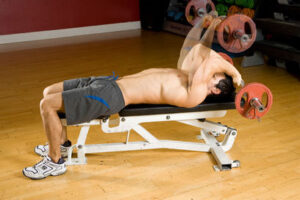Understanding Elbow Pain – Part 6: Elbow Pain in Lifters
Today, I’m going to wrap up this six-part series entirely devoted to the elbow. In case you missed the first five, check them out:
Part 1: Functional Anatomy
Part 2: Pathology
Part 3: Throwing Injuries
Part 4: Protecting Pitchers
Part 5: The Truth About Tennis Elbow
In this final installment, I’m going to discuss elbow issues as they pertain to a strength training population. Even though some of the treatments for these injuries/conditioning may be very similar or even identical to what we see in a throwing population, I separate lifters because their problems are almost always soft tissue in nature. While we may see stress fractures, ulnar nerve issues, and ulnar collateral ligament tears in throwers, we are virtually always dealing with problems with muscles and tendons in folks who are avid lifters. What gives?
Well, it’s very simple: they grip stuff a lot more than normal folks, and also perform a ton of repetitive movements at the elbows and wrists. This difference also makes you appreciate why we often see elbow issues in those who work on factory lines, performing the same task for hours on-end.
Why is it that all these issues present at the elbow? You see, many of the muscles involved in gripping originate at the superomedial aspect of the forearm, particularly on the medial epicondyle:
![]()
When these structures get overused, they shorten – and as we discussed in Part 1, the zones of convergence (where tendons bunch up and create friction with one another) are where we develop some nasty soft tissue adhesions.
However, this doesn’t just happen from gripping. Think about what happens when you put the bar in this position to back squat:
That bar wants to roll off his back, and while the majority of the weight is compressive loading, a good chunk of it becomes valgus stress that must be resisted by the flexors and pronators that attach at the medial aspect of the forearm/elbow. It’s not a whole lot different than the stress we see here; we just trade off the velocity and extreme range of motion in the throwing motion for prolonged loading in the lifting example:

As a general rule of thumb, the narrower the squatting grip, the more stress on the elbow. Unfortunately, the wider the grip, the more shoulder problems we tend to see, as this position can chew up the biceps tendon. The solution is to maintain as much specificity as possible with respect to one’s chosen endeavor, but find breaks from the repetition of these squatting positions by plugging in options like front squats, giant cambered bar squats, and safety squat bar squats.
For these reasons, I also look at soft tissue work on the forearms – and particularly the medial aspect – as a form of preventative maintenance. Regardless of the soft tissue modality you select, get some work done every few months and stay on top of your stretching in the area to maintain adequate length of these tissues.
We’ll also see a fair amount of “underside” elbow pain in lifters, in most cases where the three heads of the triceps join up as a common tendon (another zone of convergence; does anyone see a pattern here?) to attach to the olecranon process. The smaller anconeus – a weak elbow extensor – also comes in here.
Almost universally, the lifters who present with overuse injuries posteriorly are the ones who use loads of elbow-only extension movements like skullcrushers/nosebreakers/French presses/triceps extensions. As a random aside to this, how can these movements have four different names, and not one of them begins with some Eastern European nationality? “French” just doesn’t get it done when we have Russian good mornings, Bulgarian split squats, Romanian Deadlifts.

Anyway, we vilify leg extensions and leg curls as being non-functional and overly stressful at the knee. The knee is the joint most similar to the elbow, yet it’s much bigger than the elbow, yet nobody contraindicates 4-5 elbow extension-only exercises per week in many routines as being inappropriate – or even excessive. If you want to build big legs, you squat, deadlift, and lunge. If you want to build big triceps, you bench, do weighted push-ups, overhead press, and do dips. The absolute load is higher, but the stress is shared over multiple joints.
In just about every instance, when you drop the direct elbow extension work from someone’s program, their elbow issues resolve very quickly and they don’t miss a beat with training.
So, as you probably inferred, it’s very rarely a lack of strength that causes elbow pain in lifters. Rather, it’s generally poor tissue quality, a lack of flexibility, and overuse of a collection of muscles that have “congested” insertion points. Simply changing the program around, getting some soft tissue work done, and following it up with some stretching can go a long way to both prevent and address these issues. That said, there will be cases where elbow pain may originate further up at the cervical spine or shoulder or – as I learned from a reader in the comments section of Part 5 – from an abducted ulna. So, there is definitely no one-size-fits-all approach.
That wraps up this series. Hopefully, you’ve gained insights into some of what’s rattling around inside my brain with respect to elbows. Thanks for putting up with me for all six installments!
Please enter your email below to sign up for our FREE newsletter.



